
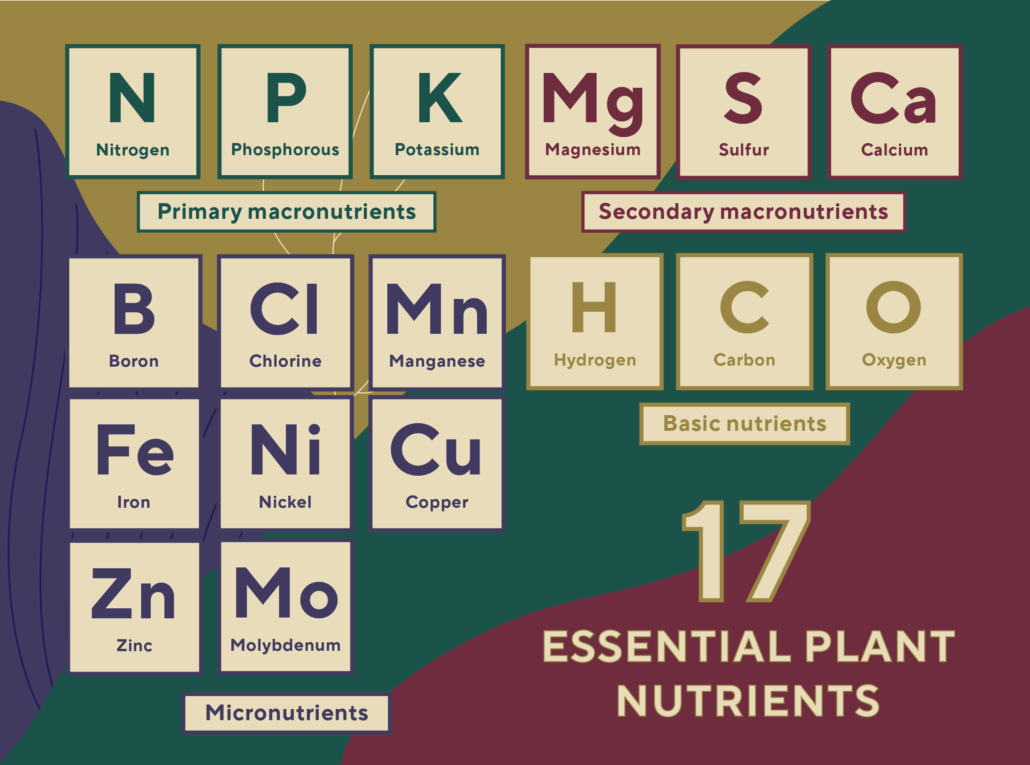
https://edis.ifas.ufl.edu/publication/AG462
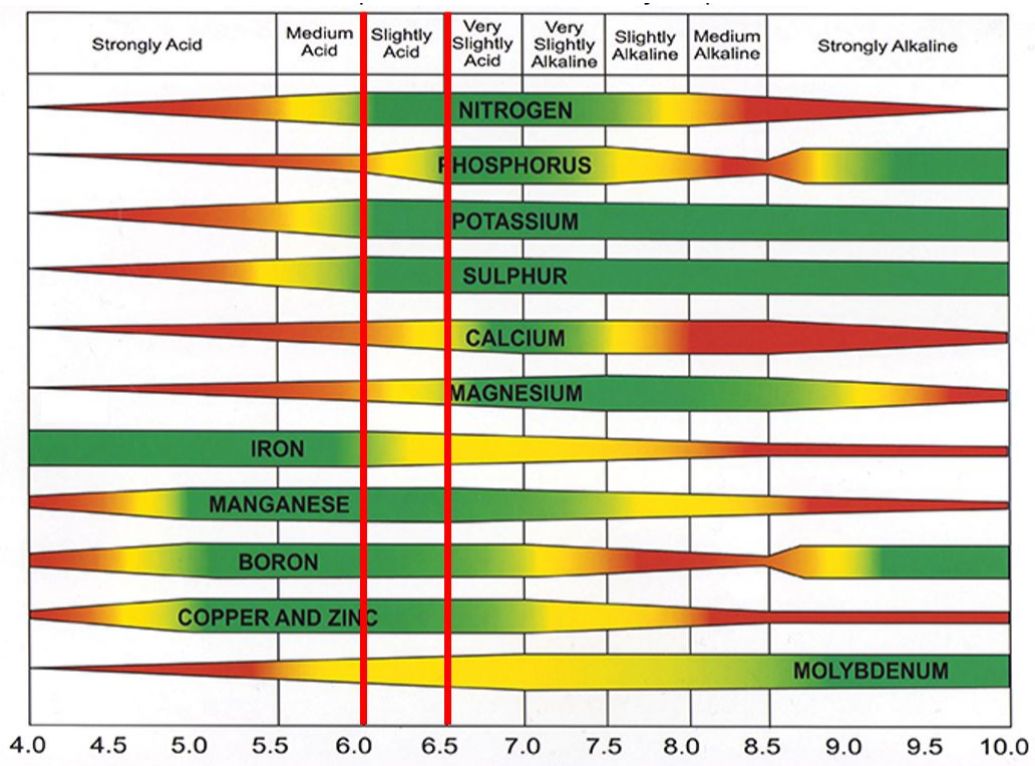
Figure 2 . Soil pH affecting nutrient availability in the soil.
Credit: Credit: No-Till Farmer (https://www.no-tillfarmer.com/articles/8691-what-is-my-soil-test-report-telling-me)
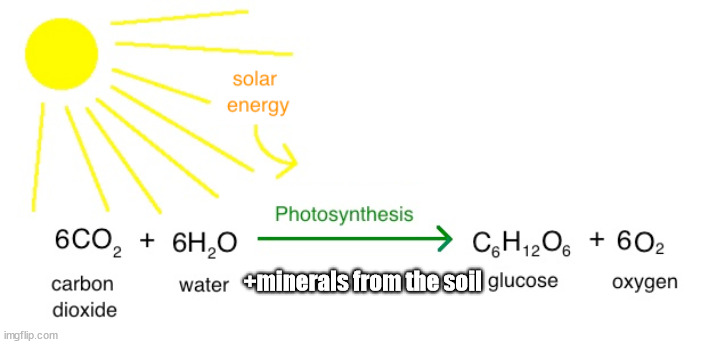
++++++++++++=
Indirectly, a plant growing faster/bigger from more CO2 is triggered to uptake additional nutrients from the roots to keep a balanced ratio needed for a health plant(a huge plant, for instance needs alot MORE water and other nutrients vs a small plant).
Stomata pulling in more CO2 will cause that plant to pull in more N and other minerals from the roots. A lack of those other minerals can cause the plant to be very slightly deficient in them.......including micro-nutrients like magnesium in some cases.
Plants get almost all nutrients from their roots, except CO2, which they uptake from stomata on the underside of their leaves and also UV radiation from the sun which comes from their leaves too.
There are actually foliar plant fertilizers that you can spray on the leaves, so they can absorb a little from the leaves.
There are exceptions. Legumes can use N from the air, for instance!
Here's a wonderful application for farmers in Africa:
++++++++++++++++++++++++=====
https://www.wur.nl/en/article/nitrogen-fixation.htm
Two spoonfuls of 'black magic powder' can double the yield of an average African field used for growing leguminous plants.
Legume crops such as beans, peanuts and soy can fix nitrogen from the air, and flourish on nitrogen- deficient soils. To do so, they need help from Rhizobium bacteria. These special bacteria stimulate the growth of nodules on the roots of leguminous plants. The bacteria help the plant by extracting nitrogen from the air, while the plant helps the bacteria grow by supplying carbon. It is a perfect symbiosis. Thanks to the bacteria, the leguminous plants are less reliant on (artificial) fertilisers. As a result they form part of the solution for infertile African fields where the harvests are far lower than in the rest of the world. The cause for these low yields is well-known: A lack of inputs such as artificial fertiliser, limited crop diversity, and poor access to knowledge.
Helping small, poor farmers achieve better yields for heir own consumption and to sell at local markets is the most powerful way of combating hunger and poverty around the world.

Use of extra rhizobium bacteria boosts nodule formation and yields
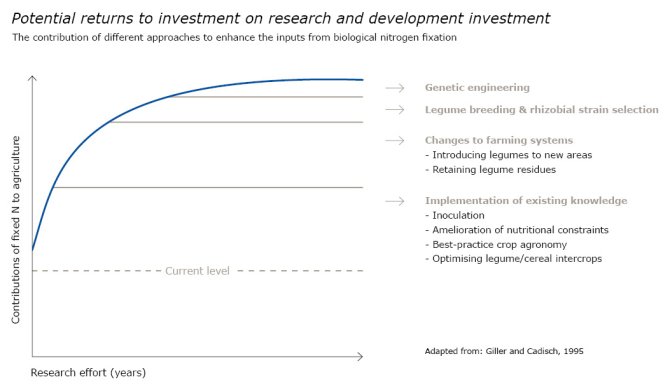
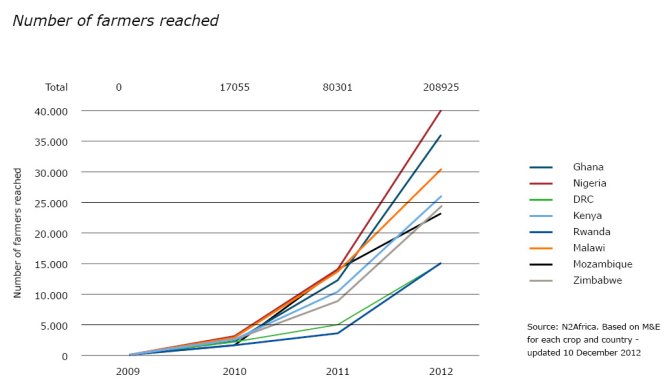
+++++++++++++++++
metmike: This is an incredible physical process!
https://www.nature.com/scitable/knowledge/library/biological-nitrogen-fixation-23570419/
The Rhizobium or Bradyrhizobium bacteria colonize the host plant’s root system and cause the roots to form nodules to house the bacteria (Figure 4). The bacteria then begin to fix the nitrogen required by the plant. Access to the fixed nitrogen allows the plant to produce leaves fortified with nitrogen that can be recycled throughout the plant. This allows the plant to increase photosynthetic capacity, which in turn yields nitrogen-rich seed. The consequences of legumes not being nodulated can be quite dramatic, especially when the plants are grown in nitrogen-poor soil. The resulting plants are typically chlorotic, low in nitrogen content, and yield very little seed (Figure 5 and 6).
Many heterotrophic bacteria live in the soil and fix significant levels of nitrogen without the direct interaction with other organisms. Examples of this type of nitrogen-fixing bacteria include species of Azotobacter, Bacillus, Clostridium, and Klebsiella. As previously noted, these organisms must find their own source of energy, typically by oxidizing organic molecules released by other organisms or from decomposition. There are some free-living organisms that have chemolithotrophic capabilities and can thereby utilize inorganic compounds as a source of energy.
Because nitrogenase can be inhibited by oxygen, free-living organisms behave as anaerobes or microaerophiles while fixing nitrogen. Because of the scarcity of suitable carbon and energy sources for these organisms, their contribution to global nitrogen fixation rates is generally considered minor. However, a recent study in Australia of an intensive wheat rotation farming system demonstrated that free-living microorganisms contributed 20 kilograms per hectare per year to the long-term nitrogen needs of this cropping system (30-50% of the total needs; Vadakattu & Paterson 2006). Maintaining wheat stubble and reduced tillage in this system provided the necessary high-carbon, low-nitrogen environment to optimize activity of the free-living organisms.
Species of Azospirillum are able to form close associations with several members of the Poaceae (grasses), including agronomically important cereal crops, such as rice, wheat, corn, oats, and barley. These bacteria fix appreciable amounts of nitrogen within the rhizosphere of the host plants. Efficiencies of 52 mg N2 g-1 malate have been reported (Stephan et al. 1979). The level of nitrogen fixation is determined by several factors, including soil temperature (Azospirillum species thrive in more temperate and/or tropical environments), the ability of the host plant to provide a rhizosphere environment low in oxygen pressure, the availability of host photosynthates for the bacteria, the competitiveness of the bacteria, and the efficiency of nitrogenase (Vlassak & Reynders, 1979).
Many microorganisms fix nitrogen symbiotically by partnering with a host plant. The plant provides sugars from photosynthesis that are utilized by the nitrogen-fixing microorganism for the energy it needs for nitrogen fixation. In exchange for these carbon sources, the microbe provides fixed nitrogen to the host plant for its growth.
Manufacturing and applying/using synthetic fertilizers.